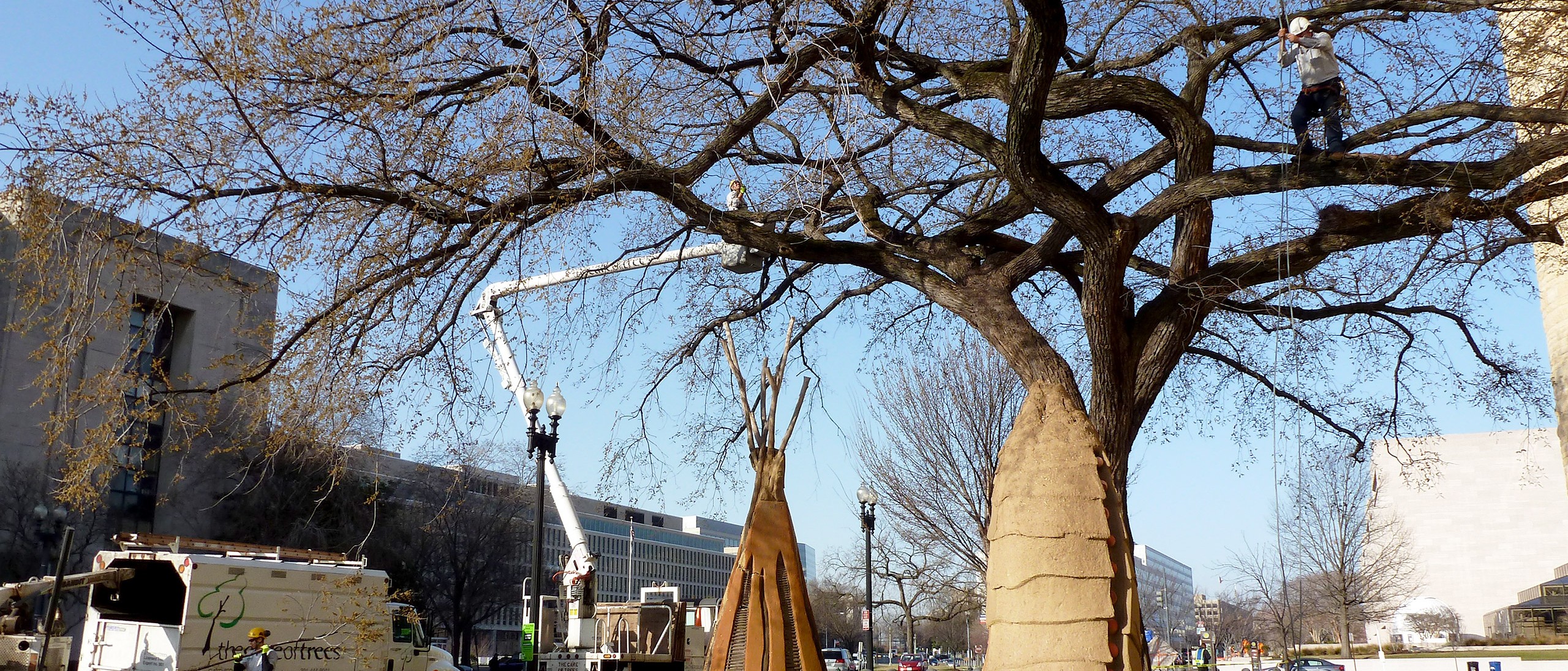Winter Tree Inspections: Identifying Tree Problems and Preparing for Next Year’s Pruning
As the brilliant fall colors fade and the north winds blow in the first flurries, activity in the garden may slow. But during this time of year, we can turn our attention toward the trees and learn so much more about their architecture, longevity, and safety with a simple visual inspection of stems and branches previously obscured by lush summer foliage.

No fancy equipment is needed. Winter tree inspections can be done by anyone with a keen attention to detail. A pair of binoculars and a short ladder might help. A tree inspection can be completed by visually scanning the tree from bottom to top, slowly circling 360 degrees around the tree to view as many perspectives as possible. Perspectives can be expanded by viewing the tree from higher vantage points such as near by upper-story windows or even a short ladder.
A winter tree inspection can identify and inventory potential problems and hazards. It is also an excellent precursor for pruning early next year, when young and mid-sized trees can be proactively pruned to discourage and avoid weaknesses in the future.
Winter Tree Inspection Problems Checklist
A few obvious problems may especially reveal themselves in winter. Many of these issues are associated with a damaged and declining tree. A Certified Arborist may need to be called in to examine and monitor these sorts of issues for safety.
Hollows and Cavities
Injured and damaged trees may decay from the inside until a tree or stem is completely hollow.
Sapwood Damage
Many stressors can damage the vital protective shell of live sapwood just under the bark around the tree. This damage may not heal and will lead to exposed soft, discolored, decaying heartwood underneath.
Dead, Broken, and Hanging Branches
In most any tree, a few small dead, broken, or hanging branches will appear from time to time.
Mushrooms
Anytime mushrooms (i.e. fungal fruiting bodies) appear from the roots or stems of a tree, advanced decay has already set in.
Cracks
Fresh cracks, characterized by a clearly visible split through a stem or branch and the color of freshly split wood, often forewarn a bigger problem.
Codominant Stems
Two or more large stems competing for dominance, attached at the same point, and heavily side-weighted are often quite weak. This is especially problematic when the connecting junction is V-shaped rather than U-shaped, leaving little wood remaining for strong attachment of all stems.
Excessive Lean
Trees with excessive lean, increasing lean, or soil heaving up around the roots may be compromised.
Root Damage
Roots circling around the base of the tree, visible root cutting, or heavy disturbance in the root zone can kill and destabilize trees.
Toward Strong Tree Architecture
The rewarding aspect of proactive, conscientious tree care is that the issues above are largely preventable and should not be common. A winter tree inspection should also provide an opportunity to assess the success of efforts to produce strong tree architecture, and formulate plans for next year’s pruning cycle. The next newsletter will discuss proactive tree pruning for strong architecture and extended tree longevity.

